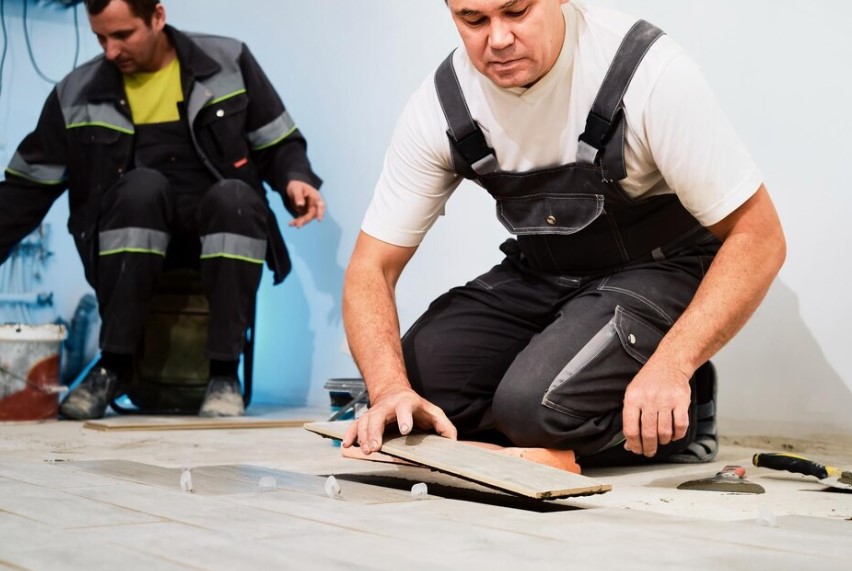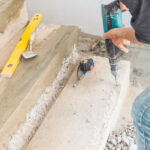Thanks to their aesthetics, durability, and versatility, wall tiles have become increasingly popular in modern interior design over the past few years. They are perfect for kitchens and bathrooms or can be used even in living rooms as a decorative element to transform the space.
Ceramic and porcelain wall tiles are also resistant to water and stain and are a more affordable alternative to natural stone walls. Since wall tiles come in different styles, shapes, and colors, homeowners who want to update their space with a tile wall treatment can easily find what suits their preferences and home style.
If you are considering wall tiles for your home, this guide will help you make a more informed decision. We discuss literally everything you need to know about wall tiles from why you should install wall tiles to types of wall tiles and wall tile maintenance. So, without wasting more time, let’s get started!
What is the difference between a wall tile and a floor tile?
While floor and wall tiles share many similarities, they differ in some ways. For instance, wall tiles are thin and light to make installation easy and add less weight to the wall. They also have more detailed textures and decorative patterns.
On the other hand, floor tiles tend to be a bit thicker and sturdier since they need to hold up foot traffic, and they also don’t have plenty of detailed texture. Wall tiles are, therefore, not a good option for flooring since they can be thin. However, certain floor tiles can sometimes be used for walls, depending on the weight, size, and manufacturer’s instructions.
Why you should choose wall tiles?
Durability and longevity: One of the most significant attributes of tiles, particularly porcelain and ceramic tiles, is that they are extremely durable and long-lasting, providing a long-term investment in style and functionality. These tiles are resistant to wear and tear, and unlike painted walls, which can chip, crack, or get damaged, wall tiles can maintain their appearance for years.
Water resistance: Tile is often used in kitchens, bathrooms, and laundry rooms because of its water-resistant features. Both ceramic and porcelain are non-porous, meaning that they don’t absorb water. This makes them ideal for areas in your house that are prone to moisture.
Easy to maintain: With your busy schedule, you are looking for something that requires minimal maintenance. Wall tiles are typically easy to clean and maintain. This isn’t the case with painted walls; they need frequent touch-ups or repainting. But for tiles, you can wipe them with a damp cloth or mild solution, and you are good to go.
Customization: Tile is the most versatile wall covering. You can quickly decide every aspect, including your desired size, shape, color, pattern, and finish. Whatever design you have in mind, you can achieve it with wall tiles.
Hygienic and allergen-free: Wall tiles offer a hygienic option for those with allergies and respiratory issues. They are non-porous and easy to sanitize, making them a beneficial choice for maintaining cleanliness.
Types of wall tiles
There are various types of wall tiles that you can choose from depending on your home style, budget, and personal preferences. Remember that different wall tiles serve different purposes, depending on their material, durability, and aesthetic qualities. Here are the most common types of wall tiles.
- Ceramic tiles
One of the most popular options for wall applications is ceramic tile. Ceramic tiles have a smooth, frequently glossy surface because they are made of clay, fired at high temperatures, and then glazed. They are perfect for backsplashes, baths, and kitchens since they are affordable, come in a variety of colors and designs, and are simple to clean.
- Porcelain tiles
Compared to ceramic tiles, porcelain tiles are denser and more resilient. They are tougher and less porous than ceramic tiles because they are created from finer clay and fired at higher temperatures. Because of their weather resistance, porcelain tiles are perfect for high-moisture spaces like bathrooms and can even be used for exterior walls.
- Natural stone tiles
Natural stone and marble tiles can achieve the opulent styles often desired in kitchens and bathrooms. Every design can be found in one of those stunning color variations and highly sought-after patterns. Granite, limestone, and travertine are a few of the most widely used natural stone tiles.
If you have the cash, consider getting this type of tile. Natural stone requires more maintenance than porcelain or ceramic tiles though. Natural stone must be sealed and resurfaced regularly to preserve its aesthetic appeal and usefulness.
Where to use wall tiles
Here are the most common places you can use wall tiles:
Shower: this is one of the most classic uses of wall tiles. Because ceramic and porcelain tiles are waterproof, they are ideal for areas more prone to moisture.
Bathroom: wall tiles are also standard in bathrooms. They can add aesthetic appeal to your bathroom, especially if you choose the right patterns and colors.
Kitchen: Wall tiles can greatly benefit your entire kitchen. You can enjoy the durability and style that wall tiles offer.
Backsplash: Tiles can protect walls from the hazards of cooking and cleaning. Most backsplashes come as tile sheets to ease installation.
How to clean and maintain your wall tile?
Finally, if you want to preserve the beauty of your wall tiles and extend their lifespan, you need to take good care of them. Wall tiles typically require minimal maintenance. Whether it is ceramic or porcelain tiles, you can clean them with mild soap and water. Avoid abrasive cleaners that can scratch the surface.
Remember to clean the grout too, as this is also part of tile maintenance. Clean the grout using a grout cleaner or a mixture of water and baking soda. You can also seal the grout periodically to prevent moisture from penetrating it and causing mold growth.
Wrapping it up
Wall tiles are a great home wall covering. They offer unmatched durability and aesthetic appeal and can also be customized to your preference since they are available in various colors, shapes, designs, and patterns. With proper care, these wall tiles will continue to enhance your wall’s appearance for years to come.
For more information visit our blog.







